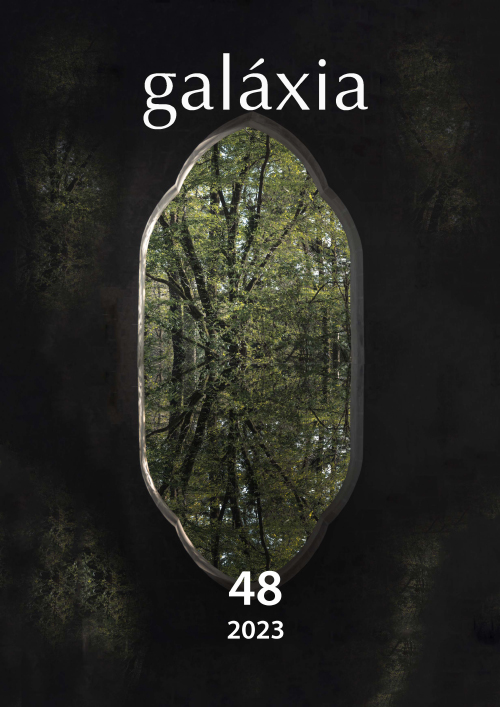Cor para além das tintas:
Colorismo e embates raciais no desenho animado Clube da Anittinha
Mots-clés :
colorismo, debates raciais, desenho animado, Clube da AnittinhaRésumé
O artigo propõe discutir a complexidade dos debates raciais em produtos infantis, sua materialização na animação Clube da Anittinha (2018) e sua relação com o colorismo. Esta discussão se constrói com base na ideia de identidade nacional brasileira instituída pela noção de democracia racial na obra de Gilberto Freyre (2006), mas segue uma trajetória crítica em relação ao conceito, tendo em vista preconceitos pacificados socialmente por meio de fatores estéticos e sociais no contexto brasileiro (SOUZA, 1983). Existe a tendência nas animações infantis de incluir debates raciais somente por meio dos tons de pele utilizados na composição das personagens. Somado ao discurso da diferença, esses fatores são estratégias narrativas que neutralizam e perpetuam os estigmas em relação à raça. Com base nessas provocações, o texto apresenta uma análise voltada para a composição da cor, do cabelo e das relações que surgem na animação e aponta para uma série de apagamentos e para a prática de uma representatividade superficial.
Références
ALMEIDA, Silvio Luiz de. Racismo estrutural. São Paulo: Sueli Carneiro; Pólen, 2019.
ALÔ, amigos. Direção: Bill Roberts, Jack Kinney, Ham Luske. Disney +. 1943. 42 minutos. Disponível em: <https://www.disneyplus.com/pt-br/movies/alo-amigos/1xYJxc5omEIJ>. Acesso em 08 jul. 2021.
BOGLE, D. Toms, coons, mulattoes, mammies, and bucks: An interpretive history of Blacks in American films (New 3rd ed.). New York, NY: Continuum, 1994.
COLVARA, Lauren Ferreira. Os Programas Infantis e sua trajetória na TV aberta brasileira: os casos mais importantes. In: V Congresso Nacional de História da Mídia. São Paulo. 2007. Disponível em: <https://goo.gl/cTkzRh>. Acesso em: 30 jul. 2021.
DEVULSKY, Alessandra. Colorismo. São Paulo: Jandaíra, 2021.
DOMINGUES, H.; CALVO, A. DESIGN E ANIMAÇÃO: uma análise de linguagem das animações de Walt Disney para campanhas sanitárias latino-americanas no contexto da política da boa vizinhança. Jornada de Iniciação Científica e Mostra de Iniciação Tecnológica - ISSN 2526-4699, Brasil, dez. 2018. Disponível em: <http://eventoscopq.mackenzie.br/index.php/jornada/xivjornada/paper/view/1169/765>. Data de acesso: 17 jun. 2021.
DORNELLES, Wagner dos Santos. O que se cala: panorama da representação negra nas animações mainstream. 2019. 118f. Dissertação (Mestrado em Comunicação) - Universidade Federal Fluminense, Niterói, RJ, 2019. Disponível em:
<https://app.uff.br/riuff/handle/1/15768>. Acesso em 31 jan. 2022.
BONILLA-SILVA, Eduardo. Racism without Racists: Color-Blind Racism and the
Persistence of Racial Inequality in the United States. Maryland: Rowman &.
Littlefield Publishers, 2006.
FIEL, Arthur Felipe de Oliveira. A Tela Encantada: infância e conteúdo infantil na TV do Brasil. 2019. 208f. Dissertação (mestrado)-Universidade Federal Fluminense, Niterói, 2019. Disponível em: <https://www.academia.edu/39992184/A_TELA_ENCANTADA_inf%C3%A2ncia_e_conte%C3%BAdo_infantil_na_TV_do_Brasil>. Acesso em 31 jan. 2022.
GONZALEZ, Lélia. Por um feminismo afro-latino-americano: ensaios, intervenções e diálogos. Rio de Janeiro: Zahar, 2020.
GOMES, Andrade; SANTOS, Laura Torres S. dos Santos. O Double Coding na Animação: A Construção do Desenho Animado Contemporâneo para Adultos e Crianças. Inovcom, v. 2, n. 2, 2007. Disponível em: <http://portcom.intercom.org.br/revistas/index.php/inovcom/article/view/345/337>. Acesso em 19 jan. 2022.
GOMES BARBOSA, K.; DE SOUZA, F. A solidão das meninas negras: apagamento do racismo e negação de experiências nas representações de animações infantis. Revista ECO-Pós, [S. l.], v. 21, n. 3, p. 75–96, 2018. DOI: 10.29146/eco-pos. v21i3.20239. Disponível em: https://revistaecopos.eco.ufrj.br/eco_pos/article/view/20239. Acesso em: 20 jan. 2022.
HALL, Stuart. Cultura e representação. Rio de Janeiro: Ed. PUC-Rio: Apicuri, 2016.
HOLANDA, Sérgio Buarque. O homem cordial In: Raízes do Brasil. 26.ed. Rio de Janeiro: José Olympio Editora, 1995.
HOLZBACH, A. D. Eles cresceram tão rápido: o Cartoon Network em diálogo com o desenho brasileiro Irmão do Jorel. MATRIZes, [S. l.], v. 13, n. 1, p. 211-229, 2019. DOI: 10.11606/issn.1982-8160.v13i1p211-229. Disponível em: http://www.revistas.usp.br/matrizes/article/view/147029. Acesso em: 27 jan. 2021.
HOOKS, Bell. Ensinando a transgredir: a educação como prática da liberdade. 2 ed. São Paulo: Editora WMF Martins Fontes, 2017.
HOOKS, Bell. Olhares negros: raça e representação. São Paulo: Elefante, 2019.
HUNTER, M. The Persistent Problem of Colorism: Skin Tone, Status, and Inequality. Sociology Compass, 2007.
KILOMBA, Grada. Memórias da plantação: episódios de racismo cotidiano. Rio de Janeiro: Cobogó, 2019.
LYMAN, Stanford M. “The ‘Yellow Peril’ Mystique: Origins and Vicissitudes of a Racist Discourse.” International Journal of Politics, Culture, and Society, vol. 13, no. 4, 2000, pp. 683–747. JSTOR, http://www.jstor.org/stable/20020056. Accessed 12 Aug. 2022.
MEMÓRIA GLOBO, Capitão Furacão. Disponível em: <https://memoriaglobo.globo.com/entretenimento/infantojuvenil/capitao-furacao/#:~:text=Capit%C3%A3o%20Furac%C3%A3o%20vivia%20cercado%20de,filmes%20curtos%20e%20desenhos%20animados.> Acesso em: 31 jan. 2022.
MEMÓRIA GLOBO, Uni–Duni–Tê. Disponível em: <https://memoriaglobo.globo.com/entretenimento/infantojuvenil/uni-duni-te/>. Acesso em 31 jan. 2022.
MUNANGA, Kabengele. A difícil tarefa de definir quem é negro no Brasil. Estudos Avançados [online]. 2004, v. 18, n. 50 [Acessado 20 agosto 2022], pp. 51-66. Disponível em: <https://doi.org/10.1590/S0103-40142004000100005>. Epub 08 ago. 2008. ISSN 1806-9592. https://doi.org/10.1590/S0103-40142004000100005.
MUNANGA, Kabengele. Rediscutindo a mestiçagem no Brasil: identidade nacional versus identidade negra. 5ed. Belo Horizonte: Autêntica Editora, 2019.
OREO “Faz de Contos. Direção: André Maciel. YouTube. 2020. 04:02 minutos. Disponível em: <https://www.youtube.com/watch?v=L3cqYhPXI2M>. Acesso em 31 jan. 2022.
ORLANDI, Eni P. Análise do discurso: princípios e procedimentos. 13 ed. Campinas: Pontes Editores, 2020.
RIBEIRO, Djamila. Pequeno manual antirracista. São Paulo: Companhia das Letras, 2019.
SCHWARCZ, Lilia M. Nem Preto nem branco, muito pelo contrário: cor e raça na sociedade brasileira. São Paulo: Claro Enigma, 2017.
SOUZA, Neusa Santos. Tornar-se negro: as vicissitudes da identidade do negro brasileiro em ascensão social. Rio de Janeiro: Edições Graal, 1983.
Téléchargements
Publié-e
Comment citer
Numéro
Rubrique
Licence
© Galáxia. Revista do Programa de Pós-Graduação em Comunicação e Semiótica 2023

Cette œuvre est sous licence Creative Commons Attribution 4.0 International.
Os autores de artigos publicados mantêm os direitos autorais de seus trabalhos, licenciando-os sob a licença Creative Commons CC-BY, que permite que os artigos sejam reutilizados e distribuídos sem restrição, desde que o trabalho original seja corretamente citado. Os autores concedem para GALÁxIA. Revista Interdisciplinar de Comunicação e Cultura o direito de primeira publicação.



 Este obra está licenciada com uma Licença
Este obra está licenciada com uma Licença 